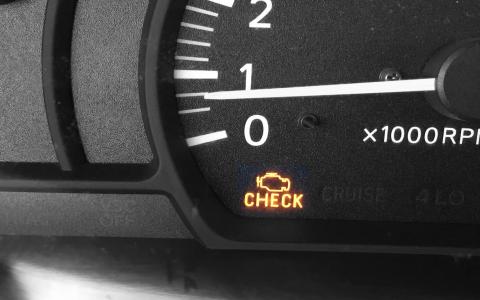 |
|
| Manufacturer | Ford Motor Company |
|---|---|
| Also called |
Ford Lobo (Mexico) Ford F-250 (Mexico) |
| Production | 1996-2003 1996-1998 (F-250) |
| Model years | 1997–2003 1997-1998 (F-250) |
| Assembly | Cuautitlan, Mexico Kansas City, Missouri, USA Norfolk Assembly (Norfolk, Virginia), USA Louisville, Kentucky, USA Oakville, Ontario, Canada Valencia, Venezuela |
| Predecessor | Ford F-Series ninth generation (1992-1996/1997) |
| Successor | Ford F-Series eleventh generation (2004-2008) Ford Super Duty (for F-250) |
| Body style | 2-door pickup 3-door pickup 4-door pickup |
| Layout | Front engine, rear-wheel drive / four-wheel drive |
| Platform | Ford P platform |
| Engine | 4.2 L (256 CID) Essex V6 4.6 L (281 CID) Triton V8 5.4 L (330 CID) Triton V8 |
| Transmission | 4-speed automatic 5-speed manual |
| Wheelbase | 119.9 in (3,045 mm) 138.5 in (3,518 mm) 157.1 in (3,990 mm) 120.2 in (3,053 mm) 138.8 in (3,526 mm) 157.4 in (3,998 mm) 119.8 in (3,043 mm) |
| Length | 202.2 in (5,136 mm) 220.8 in (5,608 mm) 225.9 in (5,738 mm) 239.4 in (6,081 mm) 206.9 in (5,255 mm) 225.5 in (5,728 mm) 207.2 in (5,263 mm) 225.8 in (5,735 mm) 244.1 in (6,200 mm) 244.4 in (6,208 mm) 226.2 in (5,745 mm) 208.0 in (5,283 mm) |
| Width | 78.4 in (1,991 mm) 79.3 in (2,014 mm) (Crew Cab) 79.4 in (2,017 mm) 79.5 in (2,019 mm) 79.1 in (2,009 mm) 79.9 in (2,029 mm) |
| Height |
73.4 in (1,864 mm) 76.9 in (1,953 mm) 70.9 in (1,801 mm) |
| Related | Lincoln Blackwood Ford Expedition Lincoln Navigator |
Ford took the aero styling further for 1997 with a rounded nose on the new F-series. Since it was the F-150's first major redesign since 1980, the redesigned truck went on a nationwide 87-stop tour to Ford plants and the external part suppliers in October, 1995 prior to its release.[1] To build anticipation for the redesigned truck, the 1997 model was released in January 1996 with the first ad campaigns airing during Super Bowl XXX. Because of the radical styling, Ford predicted that traditional truck buyers would not receive the radical and car-like 1997 well, so it continued to produce and sell the previous 1996 model alongside the redesigned 1997 model for a few months.[2]
A wide variety of body options were available: regular cab and SuperCab, standard or flareside boxes, and short or long beds. A new Lightning was introduced in 1999, and Harley-Davidson and King Ranch versions were also created. In 2001 the SuperCrew cab was introduced with four full-size doors. In 2002, an FX4 model was introduced which came with skid plates,a carbon steel frame, Rancho shock absorbers, and specific 17" aluminum wheels along with more standard features that were optional on XLT. In 2003, a sporty STX trim package was introduced, aimed at younger truck buyers. The STX package featured color keyed front/rear bumpers along with clear lens headlights and integrated round fog lamps. The package also featured chrome step rails, 17" chrome wheels, and a Kenwood Z828 stereo was installed in place of the standard Ford radio.
This generation F-150 received an overall "Poor" rating by the Insurance Institute for Highway Safety (IIHS) in the frontal offset test,[3] and was ranked the 2nd Worst Performing Vehicle behind the 1997–2005 GM U-platform minivans.
Sales of the F-150 surged in the tenth generation from 750,000 to over 900,000 in 2001 as the General Motors and Chrysler/DaimlerChrysler's Dodge Ram products lagged. Ford's sales dropped, however, for the final years of this generation as the redesigned Dodge trucks were released.
The new F-150 was Motor Trend magazine's Truck of the Year for 1997.[4] The grille was updated in 1999 with minor interior updates as well. The SuperCrew was added to the lineup in 2001. Ford manufactured a limited run of "Heritage" F-150s of this body style in 2004 (as 2004 model years) to finish out production.
Ford has found that the cruise control system in many of their trucks could catch fire, because the switch system could corrode over time, overheat and ignite. Ignition was later blamed on spillage from the adjacent master cylinder. On March 5, 2007 Ford recalled 155,000 2003 full-size pickups and full-size SUVs for the defective part. During the previous two years Ford had recalled 5.8 million vehicles in because of the defective cruise control systems in trucks, SUVs and vans. That recall, one of the largest in history, covered vehicles from the 1994–2002 model years.[5]
This generation of F-150 was sold in Mexico until the twelfth generation 2010 model was released there.
Contents
|
Powertrain
A new lineup of improved efficiency engines were offered beginning in 1997. A 4.2 L OHV V6, based on Ford's 3.8 L Essex V6, replaced the 4.9 L OHV I6, while 4.6 and 5.4 liter SOHC V8s replaced the 5.0 and 5.8 liter OHV V8s. The 7.5 liter big block V8 was replaced by the 6.8 liter V10 for the Super Duty models. The 4.6 and 5.4 liter V8s were marketed under the name Triton and mark the first use of Ford's Modular Single Overhead Cam (SOHC) engines in the F-series pickups. Ford's own 8.8 IFS replaced the Dana 44 front end, while the Ford 8.8 rear remained. The Ford Sterling 9.75 axle was also optioned in heavy-duty versions. In 2000 the Sterling 10.25 axle became an option.
Engines:
| Engine | Years | Power | Torque | Notes |
|---|---|---|---|---|
| 4.2 L Essex V6 | 1997–2003 | 202 hp (151 kW) | 252 lb·ft (342 N·m) | |
| 4.6 L Triton V8 | 1997–1998 | 220 hp (160 kW) | 280 lb·ft (380 N·m) | |
| 4.6 L Triton V8 | 1999–2003 | 231 hp (172 kW) | 293 lb·ft (397 N·m) | |
| 5.4 L Triton V8 | 1997–1998 | 235 hp (175 kW) | 330 lb·ft (450 N·m) | |
| 5.4 L Triton V8 | 1999–2003 | 260 hp (190 kW) | 350 lb·ft (470 N·m) | |
| 5.4 L Supercharged Triton V8 | 1999–2000 | 360 hp (270 kW) | 450 lb·ft (610 N·m) | Lightning |
| 5.4 L Supercharged Triton V8 | 2001–2003 | 380 hp (280 kW) | 450 lb·ft (610 N·m) | Lightning |
| 5.4 L Supercharged Triton V8 | 1999–2003 | 340 hp (250 kW) | 425 lb·ft (576 N·m) | Harley-Davidson |
| 6.8 L Triton V10 | 1999–2003 | 310 hp (230 kW) | 425 lb·ft (576 N·m) | Super Duty Only |
| 7.3 L Power Stroke Turbo Diesel V8 | 1999–2003 | 250 hp (190 kW) | 500 lb·ft (700 N·m) | Super Duty Only |
Variants
F-250

![]()
1997–1998 Ford F-250
With the initial introduction of the new F-Series in 1997, only the F-150 was produced. To bridge the gap between the F-150 and the previous generation heavier-duty models (to be replaced by the Super Duty series for 1999), the light-duty F-250 was produced as a temporary model for 1997-1998. While externally identical to the F-150 (with the exception of its 7-lug wheels), the F-250 gained increased load capability from a heavy-duty rear axle and load-leveling rear suspension. The F-250 HD (Heavy Duty) was in the same series as the F-350.
After the introduction of the Super Duty version of the F-Series in 1998 as a 1999 model, the light-duty version of the F-250 was discontinued; the heavy-duty suspension continued on as the "7700" package for the F-150 (noted on the tailgate emblem).
SVT Lightning
The SVT Lightning is a sports/performance version of the F-150, released by Ford's SVT (Special Vehicle Team) division.
1999-2004

![]()
Ford F-150 SVT Lightning
In 1999, after a three-year hiatus, Ford SVT unveiled a new Ford Lightning powered by a modular SOHC 16-valve 5.4 L Triton engine producing 360 horsepower (270 kW) and 440 ft·lbf (600 N·m), with a factory-installed Eaton supercharger. The 4R100 automatic transmission was used, and the rear gear ratio was 3.55:1. The Lightning featured 18" wheels and Goodyear Eagle F1 295/45ZR-18 tires. The suspension system, which lowers the truck one inch in front and two inches in the rear, was also modified from the standard F-150. It retained the front short-and long-arm system with coil springs and a 31 mm solid stabilizer bar along with the rear solid axle with five-leaf springs and a 23 mm solid stabilizer bar. Monroe shocks were used from 1999-2001 then replaced with Bilstein shocks from 2002-2004.
For the 2001 model year, the engine design was slightly altered to produce 380 horsepower (280 kW) @ 4,750 rpm and 450 ft·lbf (610 N·m) @ 3,250 rpm. Also, the previously leaky intercooler was redesigned. This problem was addressed as a recall in earlier models. A cast iron block was used instead of aluminum. These upgrades were critical in order to support the 8 psi (0.55 bar) of boost delivered from the stock Eaton M112 roots supercharger. Another engine revision came in the 2003 Model Year when a weakness in the heads, the lack of sufficient threads for spark plugs, was addressed and fixed, although "piston slap", a mild knocking noise while the engine is cold, was still present. At the other end of the drivetrain, the final drive ratio was shortened to 3.73:1 with an 9.5 inch rear end in 2001. Also, in 2001 the drive shaft was increased in size to a 4.5-inch (110 mm) aluminum unit, from the previous 3.5-inch (89 mm) steel unit. The specially developed 295/45ZR-18 Goodyear Eagle F1-GS unidirectional tires were upgraded utilizing a new generation F1 GS rubber compound. With these engine and drivetrain revisions, Car and Driver magazine drove a Lightning from zero to60 mph (100 km/h) in 5.2 seconds. For 2003, the Lightning's cargo capacity was raised from 800 lb (400 kg). to1,350 lb (610 kg).
The second generation Lightning was initially offered in just Bright Red, Black, and White paint colors. The 2000 Model Year brought the addition of the Silver color to the lineup. In 2002, True Blue, a very dark blue, was offered, but replaced with a lighter Sonic Blue in 2003. The 2003 Model Year also saw the introduction of the Dark Shadow Gray color.
These trucks were manufactured at Ford's Canada Truck Facility in Oakville, Ontario until its closure. Special features specific to the Lightning included:[6]
- 5.4 L 2V Triton Supercharged Intercooled V8 engine
- Modified 4R100 4-speed automatic transmission with OD lockout
- Limited-slip differential
- Auxiliary transmission fluid cooler
- Eaton supercharger
- Engine super cooling system
- Heavy duty battery
- Unique front fascia with integrated, round fog lamps
- Unique upper and lower grilles
- Unique front lower air deflectors
- Unique cab rocker and lower box moldings
- Unique wheels and tires
- 4-wheel ABS / 4-wheel disc brakes
- Heavy duty front and rear shock absorbers
| Year | Engine | Power | Torque | Production |
|---|---|---|---|---|
| 1999 | 5.4 L supercharged Triton V8 | 360 hp (268 kW) | 440 ft·lbf (597 N·m) | 4,000 |
| 2000 | 4,966 | |||
| 2001 | 380 hp (283 kW) | 450 ft·lbf (610 N·m) | 6,381 | |
| 2002 | 4,726 | |||
| 2003 | 4,270 | |||
| 2004 | 3,781 | |||
| Total | 28,124 | |||
|
|
|
Ford F-150 Flareside |
|
|
|
Ford F-150 King Ranch SuperCrew |
|
|
|
Ford F-150 Harley Davidson |
|
|
|
1999–2003 Ford F-150 SuperCab long bed |
|
|
|
1997–1998 Ford F-150 SuperCab XLT |
|
|
|
2003 F-150 Super Crew Off Road 4×4 |
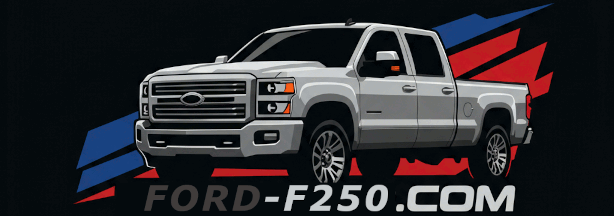
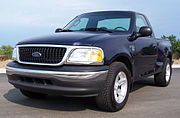



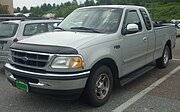


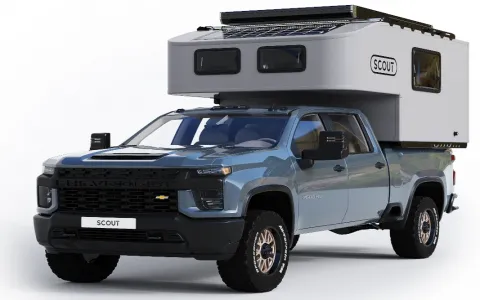
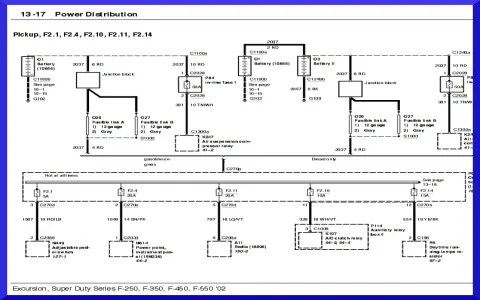

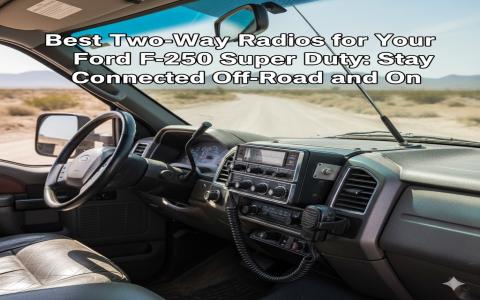


![What Ford F150 is Best for Towing ? [Full Guide]](/sites/default/files/styles/frontpage_stories/public/2025-04/f250-camping.webp?itok=6Ah370zB)
